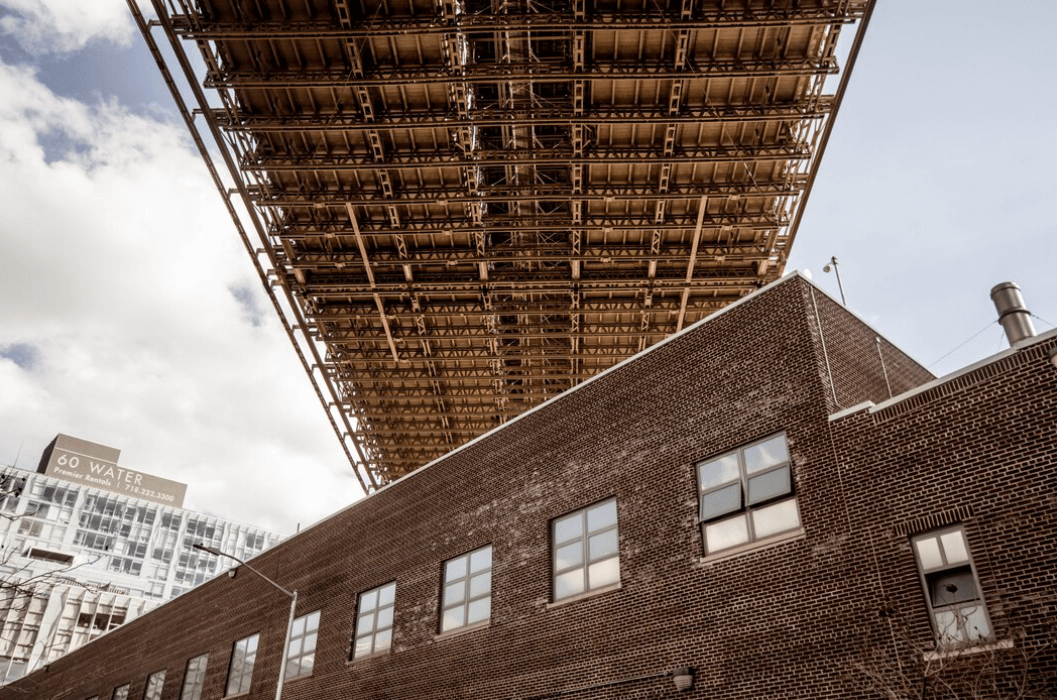Great Museums Created for Roofers, Carpenters, Architects, and Builders
Are you a roofer, carpenter, architect, or builder seeking inspiration and education? Look no further than museums dedicated to your profession! These unique institutions offer a wealth of knowledge and networking opportunities for those in the construction industry. From learning about ancient building techniques to exploring cutting-edge technology, these museums provide valuable insights into the evolution of your craft. In this blog post, we’ll explore some great museums created specifically for roofers, carpenters, architects, and builders. So grab your hard hat and let’s dive in!
The Value of Museums for Roofers, Carpenters, Architects, and Builders
Museums are an excellent resource for professionals in the construction industry, including roofers, carpenters, architects, and builders. These museums provide a rich insight into the history of these professions and showcase some of the most innovative techniques used by past generations.
For roofers specifically, these museums offer valuable information on roofing materials and designs from different time periods. They can also serve as a source of inspiration for new roofing techniques.
Carpenters can benefit from visiting museums that showcase traditional woodworking tools and techniques. It is fascinating to see how carpentry has evolved over time with advancements in technology.
Architects have much to gain from studying exhibits that display architectural styles throughout history. Such displays can offer ideas on how to incorporate timeless design elements into contemporary projects.
Builders will find value in learning about the evolution of building materials and methods through museum exhibitions. This information could be useful when creating sustainable buildings using eco-friendly materials or designing structures resistant to natural disasters such as earthquakes or hurricanes.
In addition to providing educational benefits, construction museums also present networking opportunities for professionals within their respective industries. Visitors may meet colleagues or potential clients during tours, seminars, or workshops hosted at these locations.
Construction museums are indispensable resources for anyone interested in gaining knowledge about their respective profession’s history while staying up-to-date with current trends being applied today.
Museums for Roofers
For roofers, visiting museums dedicated to their profession can offer a unique insight into the history and evolution of roofing techniques. These museums showcase tools and equipment used in past eras, as well as historical examples of different types of roofs.

One such museum is the National Roofing Contractors Association Museum in Chicago. The museum features exhibits on various roofing materials and techniques, including shingles made from wood, slate, asphalt, and metal. Visitors can also learn about the safety measures taken by roofers throughout history to protect themselves while working at heights.
Another notable museum for roofers is the Western Roofing Expo’s Hall of Fame Museum located in Las Vegas. This museum honors those who have contributed significantly to the industry through innovation or leadership. It also includes displays featuring vintage tools and equipment used by early roofers.
Visiting these museums offers practical benefits for professionals looking to further their knowledge within their field while providing an opportunity for networking with other contractors from across the country.
Museums for Carpenters
Carpenters are skilled craftsmen who work with wood to create a variety of structures, from furniture and cabinets to buildings and bridges. For carpenters looking to learn more about their craft or gain inspiration for new projects, there are several museums that showcase the history and evolution of woodworking.
One such museum is the Museum of Woodworking Tools in Maine, which houses over 12,000 antique woodworking tools dating back as far as the late 1700s. Visitors can see how tools have changed over time and learn about the innovations that have shaped modern carpentry.
Another museum worth visiting is The Carpenter’s Boat Shop in Maine, where visitors can learn traditional boat-building techniques using hand tools. This hands-on experience allows carpenters to improve their skills while also gaining insight into historical building methods.
For those interested in architectural woodworking specifically, The National Museum of Woodcarving in Iowa showcases intricate carvings used in fine homes and public buildings throughout history. Visitors can see examples of ornate door frames, mantels, moldings, and other decorative elements created by master woodworkers.
These museums offer valuable resources for carpenters looking to expand their knowledge base or explore new techniques. Whether exploring historic hand tools or learning traditional boat-building methods firsthand, these museums provide opportunities for growth that extend beyond textbooks or online resources alone.
Museums for Architects
Architects are professionals who design and plan buildings. They have an important role in shaping our cities, communities, and the way we live. For architects, visiting museums can be a source of inspiration and knowledge.
Museums for architects showcase some of the most impressive works of architecture from around the world. These museums often include exhibitions that explore different styles, trends, and techniques used by famous architects throughout history.
One museum that is popular among architects is The Museum of Modern Art (MoMA) in New York City. MoMA has a collection of over 200,000 works including architectural drawings, models, photographs, and films. Their exhibitions cover modernism to contemporary architecture with a focus on urban planning as well.
Another must-visit museum for architects is The National Building Museum in Washington D.C., which features exhibits on everything from green building practices to historic preservation efforts.
Visiting these museums provides opportunities for networking with fellow professionals in their field while also providing educational value through workshops or lectures given by experts within this industry, making them perfect places to visit if you’re looking to gain insights into new design ideas or perhaps brush up your skills.
Museums for Builders
Builders are an essential part of the construction industry, and their work is crucial to any building project. If you’re a builder looking for some inspiration or curious about the history of your profession, there are plenty of museums that cater specifically to builders.
One such example is The Builders’ Museum in Liverpool, UK, which showcases the evolution of housing construction from ancient times to modern-day techniques. Visitors can learn about different types of materials used in construction, tools and equipment utilized by builders throughout history, and how technology has transformed this profession.
Another museum worth visiting is The Building Centre in London. It offers exhibitions on contemporary architecture as well as a variety of educational programs focused on sustainable building practices and design innovations.
In the United States, one famous museum dedicated to builders is The National Building Museum located in Washington D.C., featuring exhibits showcasing architectural drawings, photographs documenting various constructions across America’s cities, including megastructures like skyscrapers and bridges.
Visiting these museums not only provides valuable education but also networking opportunities with professionals from other areas within the industry. For instance, architects, construction engineers, or historical preservationists could be around sharing their expertise while viewing similar exhibits.
If you’re interested in learning more about your craft or just exploring a new museum experience with colleagues, these museums present great options for exploration.
Benefits of Visiting These Museums
Visiting museums dedicated to the building professions can have numerous benefits for roofers, carpenters, architects, and builders. These institutions not only serve as valuable resources for historical and technical information but also offer opportunities for networking and inspiration.
One of the major advantages of visiting these museums is their educational value. They provide visitors with access to a wealth of knowledge about construction methods, materials, tools, and techniques that may have been forgotten or lost over time. Museum exhibits often showcase rare artifacts and documents that are not available elsewhere.
Another benefit of visiting these museums is the chance to network with other professionals in your field. These venues frequently host events such as conferences, workshops, lectures, or seminars where people from different backgrounds can meet each other and share ideas or best practices.
These museums also give visitors a unique opportunity to get inspired by examples of great workmanship throughout history. Seeing masterpieces created by previous generations can help aspiring professionals expand their own creative horizons while learning new skills.
Practical information like virtual tours or online resources allows people who cannot physically visit these places an insight into what they offer without any geographical constraints. Many family activities are offered at these museums, which give children an opportunity to learn about construction concepts in a fun way.
Museums dedicated to roofing, carpentry, architecture, or building professions cater towards niche audiences, providing them with educational value, networking opportunities, inspiration, practical information through virtual tours & online resources, along with various engaging activities, making it a fun and informative experience overall.
Educational Value
The educational value of museums for roofers, carpenters, architects, and builders cannot be overstated. These museums provide an opportunity for professionals in the building industry to learn about the history and evolution of their trade.
By visiting these museums, individuals can gain a deeper understanding of the materials used in construction throughout history and how they have evolved over time. They can also learn about different building techniques that were popular in different eras.
In addition to historical information, these museums often offer exhibits on current trends and innovations in the field. For example, visitors may learn about new sustainable building materials or energy-efficient designs.
These educational opportunities are particularly valuable for students who are just starting their careers in construction-related fields. By learning from experts at these institutions, they can build a strong foundation of knowledge that will serve them well throughout their careers.
By providing access to rich historical information as well as cutting-edge research into contemporary building practices, these museums play an essential role in advancing education and innovation within the construction industry.
Networking Opportunities
Visiting museums designed for roofers, carpenters, architects, and builders can provide excellent networking opportunities for professionals in these fields. Whether you’re a seasoned expert or just starting out in your career, attending events or lectures at one of these museums can help you meet other like-minded individuals who share your passion for construction and design.
Networking is crucial to building relationships within the industry and gaining new insights into innovative techniques and practices. Many of the exhibits are interactive spaces that allow visitors to learn from experts in a relaxed environment. Engaging with fellow professionals allows attendees the opportunity to exchange ideas about current trends while getting an inside look into emerging technologies.
These museums have hosted exclusive gatherings, including gallery openings, that bring together renowned architects, developers, designers, and contractors. These events are perfect venues to connect with peers who share similar interests, as well as those whose areas of expertise differ from yours – this cross-industry interaction can spark fresh ideas and collaborations amongst participants.
In addition to meeting new people at special events or happenings at these institutions, many visitors discover commonalities through group tours, which create lasting friendships beyond their visitation experience. Attending conferences on cutting-edge topics related to architecture or construction is also an excellent way of expanding one’s professional network while acquiring knowledge that will make them more competitive in their respective industries.
Inspiration and Creativity
Visiting museums can be a great source of inspiration for roofers, carpenters, architects, and builders. These institutions offer a unique opportunity to explore the history and evolution of building professions, as well as to discover new techniques and trends.
In addition to the valuable educational content on display, museums can also ignite creativity in professionals who work in these fields. Seeing how others have solved complex problems or created something beautiful can help spark ideas in one’s own work.
Museums often feature exhibits that showcase innovative designs or groundbreaking technology related to construction. By exploring these displays, visitors can gain insights into cutting-edge practices that they may not have otherwise known about.
Another way that visiting museums can boost creativity is by exposing individuals to different cultural influences. Many museums feature collections from around the world that highlight diverse styles and materials used in construction. This exposure helps broaden perspectives and encourages creative thinking when approaching one’s own projects.
Visiting museums offers an excellent opportunity for those working in construction-related fields to break out of their routine and find fresh inspiration for their work.
Practical Information for Visitors
When planning a visit to a museum, it’s important to have practical information on hand. This can include hours of operation, ticket prices, and any special events or exhibitions that may be taking place during your visit.
Before you go, check the museum’s website for up-to-date information and details on how to get there. Many museums offer discounted or free admission on certain days or times of the day, so it’s worth doing some research in advance.
Once you arrive at the museum, take advantage of any guided tours or audio guides that are available. These can provide valuable insights into the exhibits and help you make the most of your visit.
If you’re bringing children along with you, look out for family-friendly activities such as scavenger hunts or interactive exhibits. Many museums also offer educational programs designed specifically for kids.
Don’t forget to bring comfortable shoes and dress appropriately for the weather if parts of the museum are outdoors. With these practical tips in mind, your visit is sure to be enjoyable and memorable!
Virtual Tours and Online Resources
With the advent of technology, visiting museums has never been easier. Virtual tours allow visitors to explore exhibits from anywhere in the world with an internet connection. Many museums have embraced this technology by offering online resources that can be accessed anytime.
Virtual tours provide a unique opportunity for roofers, carpenters, architects, and builders to see historical building techniques and materials up close without ever leaving their homes or offices. These tours often include detailed images and videos as well as audio commentary from experts in the field.
Online resources also offer valuable information for those interested in construction professions. Museums may offer access to archives of blueprints, photographs, and other documents related to historic buildings. This information can be used for research or inspiration when designing new projects.
In addition to virtual tours and archives, many museums now offer educational programs online as well. These programs may include lectures on specific topics or courses designed for continuing education credits required by some professional organizations.
Virtual tours and online resources are excellent tools for anyone interested in learning more about construction history and techniques. They provide convenient access to valuable information that would otherwise require travel or special arrangements to view in person at a physical museum location.
Family Activities and Educational Programs
Many museums have family-friendly activities and educational programs that are designed to engage visitors of all ages. These programs offer an opportunity for families to learn about the history and evolution of building professions together.
One popular activity is a scavenger hunt, where families work together to find specific items or answer questions related to the museum’s exhibits. This type of program encourages interaction with the exhibits and promotes teamwork.
Educational workshops are another great way for families to learn more about construction industries. Workshops may cover topics such as architectural design, woodworking basics, or roofing techniques. Children can gain hands-on experience while learning from experts in their field.
Some museums also offer guided tours specifically geared towards children and families. These tours often include interactive elements like touchable objects or multimedia displays, making it easier for children to understand complex concepts.
Family activities and educational programs at construction museums provide valuable opportunities for parents and children alike to bond over shared interests and aspirations.
The Impact of These Museums on the Construction Industry
The impact of museums for roofers, carpenters, architects, and builders on the construction industry is undeniable. These institutions serve as a crucial resource in preserving the history and evolution of building professions. They help us understand how we got to where we are today by showcasing past techniques, materials, and tools used in construction.
By learning from these museums’ exhibits and artifacts, professionals can gain valuable insights into what worked well in the past and what did not. This knowledge can be applied to current projects to improve overall quality while reducing costs.
Moreover, these museums foster innovation by inspiring visitors with creative ideas that challenge traditional thinking. They encourage experimentation with new methods while maintaining a strong foundation in established practices.
In addition to their educational value, these museums also provide networking opportunities for those within the construction industry. Visiting together or attending events allows professionals from different areas of expertise to connect and share knowledge.
It’s evident that these museums play an important role in shaping the future direction of the construction industry by providing historical context, fostering innovation through creativity and experimentation, while helping professionals network with each other – all under one roof!
How These Museums Preserve the History and Evolution of Building Professions
Museums specializing in construction trades offer a unique opportunity to preserve the history and evolution of building professions. These museums collect artifacts, tools, photographs, and documents that tell the story of how these trades have developed over time.
Through exhibits and displays, visitors can see how materials and techniques have changed over the years. They can learn about the cultural influences that have shaped different styles of architecture or understand how technological innovations have transformed building methods.
By preserving this knowledge for future generations, these museums ensure that valuable information about past practices is not lost or forgotten. The evolution of carpentry tools, roofing materials, architectural design plans – all are documented within these walls.
Moreover, through interactive exhibits or guided tours with experts in their respective fields – individuals gain insight into what it takes to become a skilled roofer or carpenter.
By creating spaces where people can learn about our shared heritage as builders – these museums serve an important role in preserving our collective memory while also inspiring innovation for future generations who will continue to build upon this legacy.
The Role of These Museums in Fostering Innovation
Museums for roofers, carpenters, architects, and builders are not just places to learn about the history of their respective professions. These museums also play an important role in fostering innovation within the construction industry.
By showcasing past innovations and breakthroughs in building techniques, these museums inspire current professionals to push the boundaries of what is possible. They encourage them to think creatively and find new solutions to old problems.
Furthermore, many of these museums offer interactive exhibits that allow visitors to experiment with different materials and building techniques. This hands-on approach can spark new ideas and lead to innovative approaches when it comes time for a professional project.
Additionally, these museums often host events such as seminars or workshops that bring together experts from various fields within the construction industry. By providing opportunities for collaboration and networking, they create spaces where professionals can share knowledge and exchange ideas.
Innovation is crucial in any field, but especially so in construction, where constantly evolving technology demands constant adaptation by its practitioners. Museums designed specifically for roofers, carpenters, architects, and builders give those working in this area a chance to innovate while honoring traditions passed down through centuries of experience.
Conclusion
Museums created for roofers, carpenters, architects, and builders are an excellent and often overlooked resource in the construction industry. These museums offer valuable educational experiences that can expand your knowledge of building techniques and materials while providing inspiration for new projects.
Visiting these museums also provides opportunities to network with other professionals in your field. You may even find yourself collaborating on future projects or discovering new ways to approach old problems.
These museums help preserve the history and evolution of building professions while fostering innovation through exhibits that showcase cutting-edge technologies and techniques. Whether you’re a seasoned professional or just starting out in the industry, visiting one of these museums is an experience you won’t want to miss!



